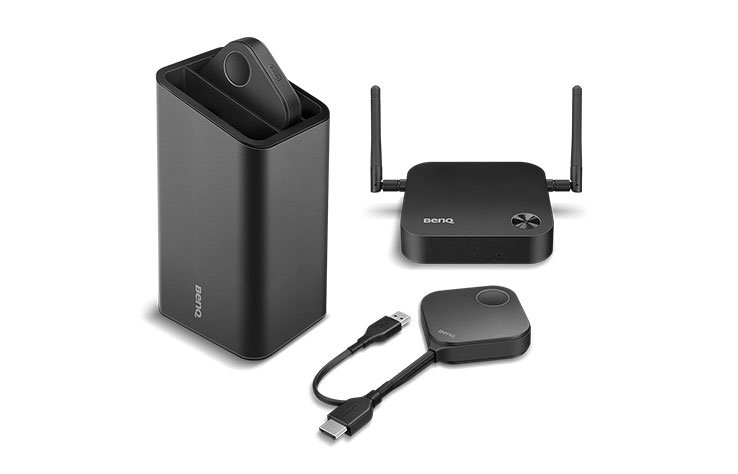These solutions utilize the company network to enable laptops and other devices to mirror a screen. They use a receiver hub that is connected to the corporate network, similar to the receivers used in the hardware approach used by Barco and BenQ but relies on specialized software apps to capture and transmit the signal to the correct screen over the enterprise WiFi network.
For a visitor to use a system, they will need to:
- Install the manufacturer’s display application software onto their notebook or device
- Log onto the correct enterprise network to access the receiver
- Pick the correct display receiver
Some devices have special passcodes to ensure that the correct screen is connected – which prevents confidential information, such as HR data or sensitive financial information, from being routed to the wrong screen.
The primary advantage of this approach for screen mirroring in the office is that it eliminates the button transmitters used in the hardware-based solution. In most cases, the signals between the laptop and display are properly encrypted to ensure that a network snooper cannot view the presentation over the network. Additionally, the cost of the receivers and software is similar to the hardware-based solutions above. However, the total cost of ownership may be higher for this type of system than hardware-based solutions.
There are two primary disadvantages of the WiFi network hub-based approach for screen mirroring:
1. The system typically requires a proprietary app to be loaded onto the laptop, which can be a major problem when a visitor does not have the rights – or is concerned that the software could contain malware or other hidden codes. Many companies “lockdown” their notebooks from third-party software to remove the threat of malware. This could delay a meeting – or cause the system to be unusable to a visitor.
2. These devices need to be installed and managed by IT staff. Typically, the visitor’s notebook used for presenting must be logged on to the same network as the presentation receiver hub. Since meeting rooms represent the most exposure to external threats, these might be set up on different VLAN networks, which would require more complicated setup and security protection from the IT department, including specific port usage. In addition, the bandwidth required to manage video and other rich content could require changing network priorities or settings. WiFi network solutions are completely dependent upon the performance of the corporate network. For a more detailed explanation of how different models of wireless presentation systems handle video, you can click here.
There are many vendors that offer this type of system that enables screen mirroring, including Crestron, Huddle, Airtame, and Mersive.

